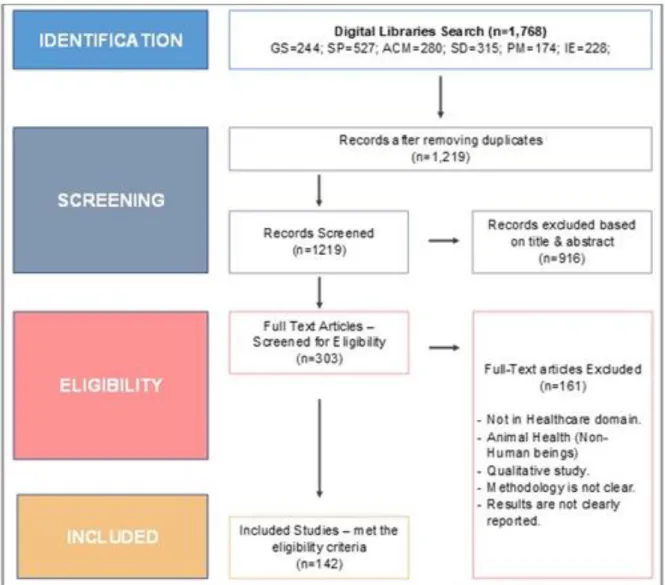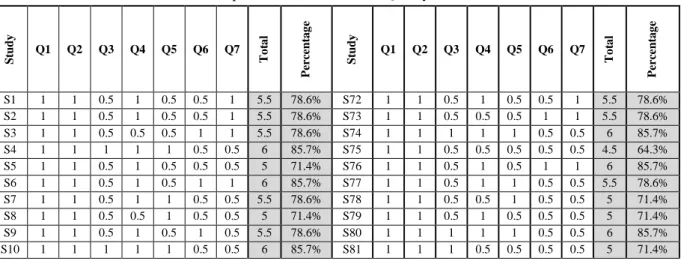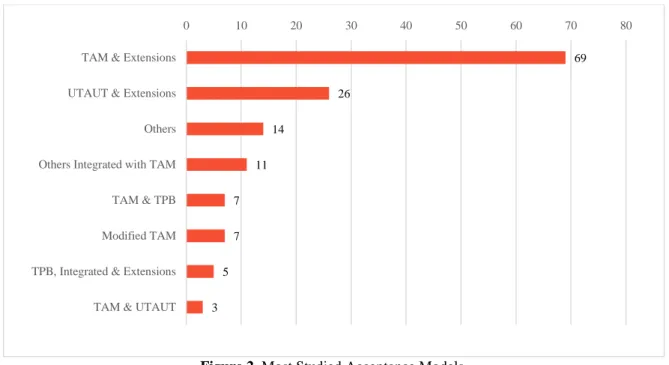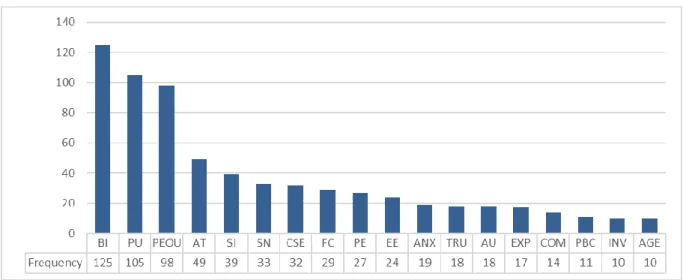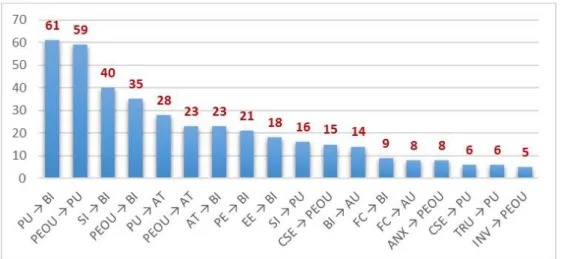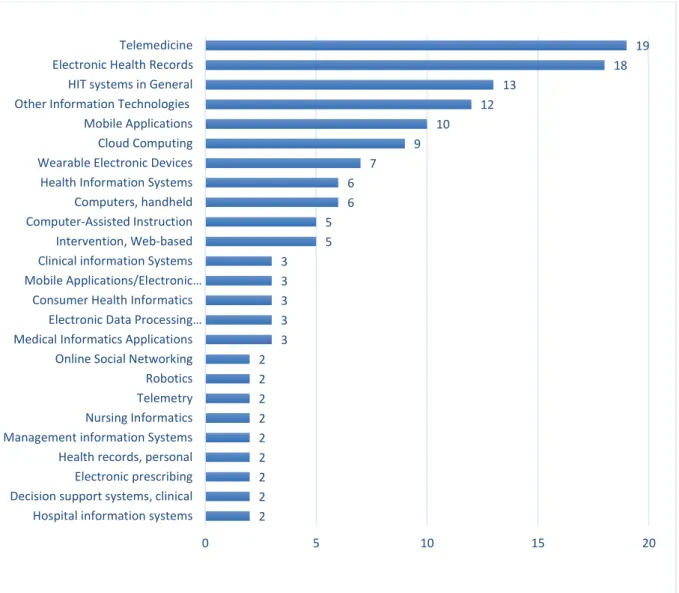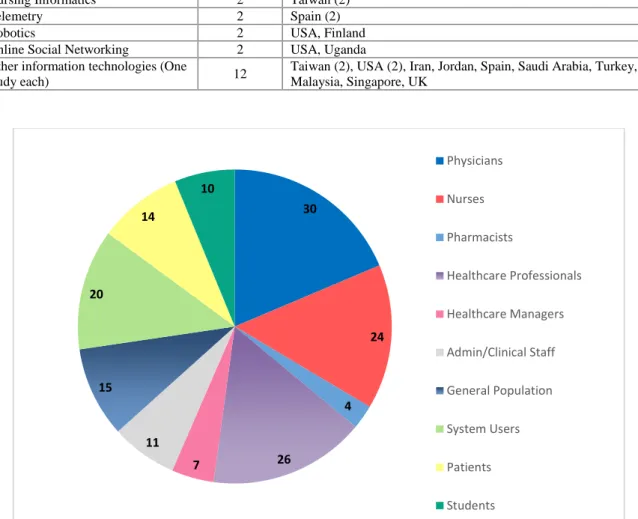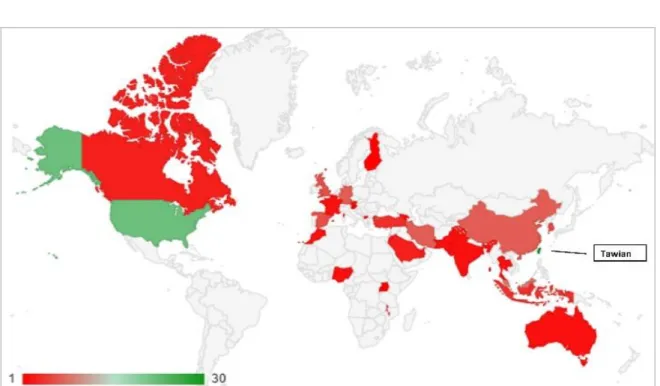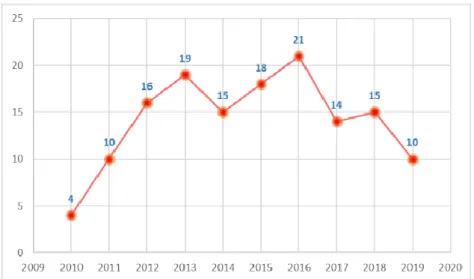A thesis submitted to the Faculty of Engineering and Informatics in fulfillment of the requirements for the degree of. I understand that the British University in Dubai may make a digital copy available in the institutional repository. The author has also granted permission to the University to keep or make a digital copy for similar use and for the purpose of digitally preserving the work.
A quick review of the literature revealed a lack of studies discussing acceptance of QMS. The model explained 66.5% of the total variance in the behavioral intention to use the improved QMS, . along with 59.3% of the total variance for the actual use of the enhanced QMS.
Introduction
- Overview
- Research Motivation
- Problem Definition
- Aims and Objectives
- Research Questions
- Key Contributions
- Outline of Dissertation
This research studies the most used technology acceptance models and their constructs in the healthcare field. This evaluation can be recognized as a basis for evaluating queue management solutions or other technology solutions in the healthcare domain. What are the research gaps in the existing literature and the general factors influencing the adoption of technology in the healthcare domain.
Adapt the developed integrated technology acceptance model to empirically evaluate it by evaluating the acceptance of the improved queue management solution in healthcare organizations in the United Arab Emirates and through the set of statistical analysis methods. The chapter will include a systematic literature review to explore existing literature related to technology adoption and acceptance in the healthcare field.
Literature Review
- Overview
- Technology Acceptance Models
- Technology Acceptance in Healthcare - Systematic Review
- Systematic Review Methodology
- Results of Systematic Review
- Discussion of Results - Systematic Review
- Overview of Queue Management
- Waiting Times in Healthcare
- Health Level Seven International (HL7) and Integration
- Summary and Research Gaps
This chapter provides an overview for the literature of technology acceptance in the healthcare domain, an overview of the queue management technology, electronic medical records and the integration in the healthcare domain. Regarding the study characteristics, the analysis classified the studies according to the studied model to address the prevailing technology acceptance models in the healthcare domain. The TAM, its extensions and modifications guide the research of technology acceptance in health care in the last decade.
Additionally, the UTAUT and its extensions have been widely used to investigate user acceptance of technology in the healthcare domain. Kim et al. 2016) to better understand technology acceptance and facilitate the construction of unified models for technology acceptance in the healthcare field.

QMS and EMR – Integration Case Study
- Overview
- Patients’ Journey – Current Process
- Patients’ Journey – “To Be” Process
- Patients with Appointments
- Patients without Appointments (Walk-in)
- Technical Perspective of the Proposed Solution
The main purpose of the integration is to implement the patient self-check-in feature to achieve early patient identification. The given number is used to call the patient by the triage nurse using the Queue solution. In case of appointments, the patient will be automatically transferred to the room of a specific doctor according to the predetermined appointment (Smart Routing).
The patient must insert the Emirates ID card into the connected smart card reader. Thereafter, the patient's information will be obtained to check the availability (registration) of the patient in the EMR database along with his/her appointment(s). In case of successful check-in (step 2), the patient must wait until the given ticket number is called by the triage nurse and shown on the TV screen.
After completing the routine triage activities, the nurse will click the "complete" button so that the patient's profile will be automatically transferred to the doctor's account, without providing another ticket number as in the current process. Finally, the patient will be summoned by the physician to carry out the expected treatment or consultation. In the case of walk-in patients, the patient must go directly to the clinic reception and provide the Emirates ID card to the receptionist.
In the case of a new patient, the patient record should be created in the EMR along with the treatment requested. Furthermore, the solution was built on Emirates Patient ID as a unique identifier for each patient, to ensure proper patient self-checkout process. Otherwise, the kiosk will display a message asking the patient to continue waiting at the clinic for additional assistance.
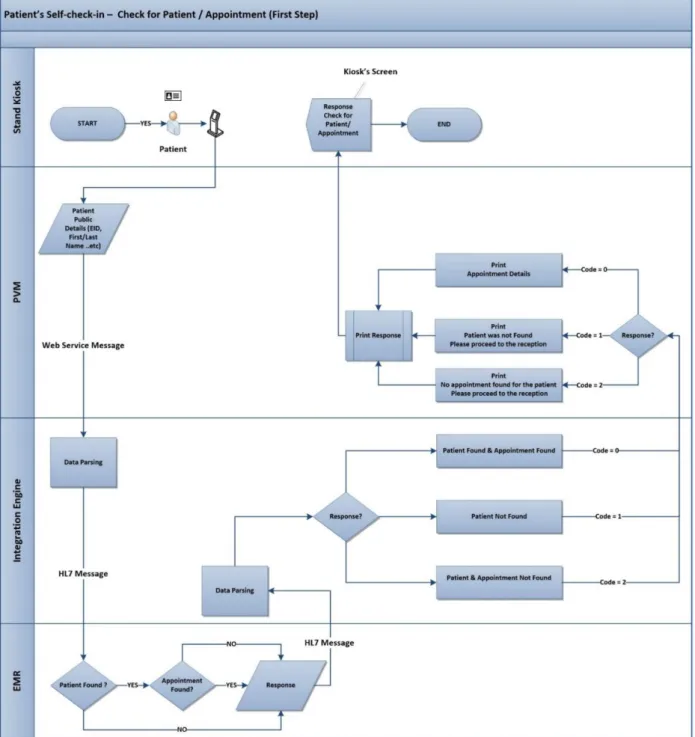
Experiment Simulation
- Overview
- Simulation Methodology
- Design and Settings
- Data Collection
- Data Analysis
- Simulation Results and Discussion
- Conclusion of the Simulation
In this chapter the performed experiments are presented that will assess the new optimizations, especially the patient self-check-in solution and its feasibility before it can be widely used in the healthcare organization as an innovative solution. The primary goal of the first experiment is to identify and record the time it takes to complete each stage of the patient's journey in the hospital; before applying the new solution. In the control week, the patient identification phase is the time interval between the arrival of the patient and identification by the clinical staff.
Similar to the control week, the simulation took place in the same three selected clinics and took into account any time booked from 9:00 a.m. to 1 p.m. In the control week, the time of the patient's arrival at the clinic reception was recorded manually by the researcher with the help of a receptionist in each clinic. The results in Table 18 show that there is a significant increase in the percentage of "target achieved" (5 minutes for the identification phase from 0% to 100%.
Although the target was set to be 5 minutes, the mean value for the identification phase in the intervention week was only (μ =18, =1) in seconds. This shows an unparalleled success for the self-check-in solution in terms of reducing patient identification time. Consequently, the percentage of "target met" for the entire patient journey increased to reach 55.74% in the intervention sample, instead of only 0.73% in the control sample.
Also, the overall trip improvement in “Destination Completed” was achieved due to a significant improvement in “Destination Completed” in the “Wait for Triage” and “Triage” phases. Self-check-in as a new innovative solution could improve the experience of patients during their journey in the clinic. Therefore, the trials can easily be adapted to study other technological solutions in clinics.
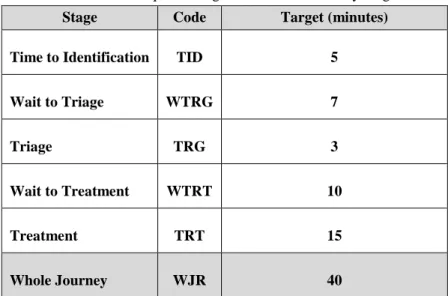
Research Model and Hypotheses
- Overview
- Research Framework
- Relationships Between Technology Acceptance Constructs
- Constructs of Research Model
- Performance Expectancy (PE)
- Effort Expectancy (EE)
- Social Influence (SI)
- Facilitating Conditions (FC)
- Attitude Towards Use (AT)
- Computer Self-efficacy (CSE)
- Trust (TRU)
- Computer Anxiety (ANX)
- Innovativeness (INV)
- Research Model
In addition, staff as technology users in the health care field is essential as information technologies play a vital role in increasing the levels of efficiency and effectiveness of their work (Rahimi et al. 2018). Over the years, the acceptance of various information technologies and applications were explored in the field of health care. The study aims to understand existing research and debates as relevant to TAM in the healthcare field.
The analysis also shows that the UTAUT and its extensions have been widely used to investigate the user's acceptance of technology in the healthcare domain (N=26) (Kalavani, Kazerani & Shekofteh 2018; Idoga et al. 2019). Those hypotheses were developed as part of the proposed models within several studies, confirmed by several scholars, and considered significant for the technology acceptance in the healthcare domain. On the other hand, we cannot ignore the extensive impact of social influence, trust, anxiety, innovativeness and computer self-efficacy factors in technology acceptance in the healthcare domain.
This gap needs to be filled by studying the adoption of different healthcare technologies in UAE. On the other hand, many scientists have discussed the problem of long waiting times in the healthcare facilities and offer different solutions. According to the findings of the conducted systematic literature review, TAM and UTAUT are the most commonly used technology adoption models in healthcare over the past decade (see Figure 2).
The main objective of this chapter is to develop an integrated theoretical model based on the widely used factors and their most confirmed relationships within the technology acceptance of the health domain as in the recent literature. Similarly, (Kim et al. 2016) has presented a comparison model between the constructs of the technology acceptance model (TAM) (Davis 1989) and the Unified Theory of Acceptance and Use of Technology (UTAUT) (Venkatesh et al. 2003) in the health domain. It was confirmed that expected effort positively affects behavioral intention in the health area (Ahmadi et al.
Also, social influence was found to be a positive influencer on behavioral intention to use technology in healthcare settings (Khan et al. Similarly, it was verified by (Tao et al. 2019; Dogan Kumtepe et al. 2021 ) that the attitude towards the use of a technology is motivating the behavioral intention in the field of health care.
Research Methodology
- Overview
- Participants and Method
- Pilot Study
- Development of Instrument
- Data Analysis
- Summary
It is necessary to propose technological solutions to solve the problem of long waits in health institutions. The XML file will be transformed by the integration engine into HL7 with the custom trigger for meeting record "SIU^Z01", the new HL7 message will be sent to the EMR as in step 2 in Table 14. Then the process will have been followed as previously illustrated in the current state of SMC.
Results and Discussion
- Overview
- Data Screening and Preliminary Analysis
- Missing Data
- Straight-lining Behavior
- Analysis of Outliers
- Normality Testing
- Analysis of Common Method Bias (CMB)
- Demographic Details for Participants
- Partial Least Square Analysis Methodology
- Assessment of the Measurement Model
- Assessment of the Measurement Model
- Discussion
- The impact of Performance Expectancy on Behavioral Intention
- The Impact of Performance Expectancy on Attitude Towards
- The Impact of Effort Expectancy on Performance Expectancy
- The Impact of Effort Expectancy on Behavioral Intention
- The Impact of Effort Expectancy on Attitude Towards
- The Impact of Social Influence on Performance Expectancy
- The Impact of Social Influence on Behavioral Intention
- The Impact of Facilitating Conditions on Behavioral Intention
- The Impact of Facilitating Conditions on Use Behavior
- The Impact of Attitude Towards on Behavioral Intention
- The Impact of Behavioral Intention on Use Behavior
- The Impact of Computer Self-efficacy on Performance Expectancy
- The Impact of Computer Self-efficacy on Effort Expectancy
- The Impact of Trust on Performance Expectancy
- The Impact of Computer Anxiety on Effort Expectancy
- The Impact of Innovativeness on Effort Expectancy
For example, a quality project to improve waiting times has taken place in the pharmacy of a public hospital in the UAE (Sadi et al. 2021). In recent years, the discrete event simulation approach has been recognized as an essential tool for improving healthcare (Brailsford et al. 2016; Perez, Anandhan & Novoa 2020). In the case of this study, 4 responses were dropped due to the straight line (variance = 0).
Social influence decreases with increasing experience (Venkatesh et al. 2003), and the result may refer to the relatively high levels of experience and age in the sample.
Conclusions
- Overview
- Research Summary
- Key Findings
- What are the research gaps in the existing literature and the common factors
- Which theoretical model is most appropriate for measuring the actual use of
- How well does the proposed model capture the healthcare professionals’ use of
- Research Contributions and Implications
- Theoretical Contributions
- Practical Implications
- Research Limitations and Future Work
In this study, a systematic review of the literature was performed with a focus on the studies of technology adoption in healthcare over the past decade. The research also included the development of an integrated theoretical model for technology adoption in the healthcare domain. As discussed in Chapter 5, the integrated theoretical model was developed based on the common factors influencing technology adoption in the healthcare domain.
Fifth, the review addressed gaps in the technology adoption literature by considering regions of implementation. First, the theoretical model seems appropriate for researching technology adoption in healthcare. Extending the Technology Acceptance Model (TAM) to the adoption of the Electronic Knowledge and Skills Framework (E-KSF) in the National Health Service (NHS).
